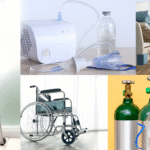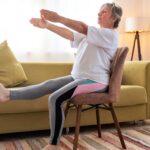
Surgery can leave your body feeling weak, sore, and stiff. But healing doesn’t always need to happen in a hospital or clinic. Many people feel more relaxed and supported when they recover in their own homes. That’s where Home Physiotherapist plays an very important role. It allows you to regain strength and movement under the care of a trained physiotherapist, without stepping out of your front door.
Home-based physiotherapy is especially useful after surgeries like joint replacements, fractures, or spine procedures. When done correctly, simple daily exercises can support faster healing, reduce pain, and help you move comfortably again.
What is Home Physiotherapy
After surgery, the body needs time to repair itself. However, staying inactive for too long can lead to stiffness, reduced circulation, and muscle loss. Physiotherapy at home helps prevent those issues by introducing safe, simple movements that gradually restore strength and flexibility.
One of the biggest advantages of home physiotherapy is comfort. Patients don’t have to travel, wait in queues, or adjust to a new environment. Everything happens in a place they know as their own home. This is especially important for elderly patients, those with mobility limitations, or anyone who feels anxious in clinical settings.
Another benefit is that treatment is completely personalized. The physiotherapist tailors every session to the patient’s condition, goals, and daily energy levels. This one-on-one attention leads to faster recovery, better confidence, and fewer chances of complications.
Top 5 Home Physiotherapy Exercises for Recovery
Before starting any exercise, always consult with your physiotherapist or doctor. Everyone’s body heals differently, and exercises must be adjusted based on surgery type, age, and health status. Here are five gentle exercises that are commonly used in home physiotherapy after surgery:
a) Ankle Pumps
Simple but powerful. Lie down comfortably, and point your toes away from you. Then, pull them back toward your body. This movement boosts blood circulation and helps prevent clots in the legs, especially after leg or abdominal surgeries.
b) Quad Sets
This exercise is ideal after knee surgeries. Sit with your legs stretched out in front of you. Tighten the thigh muscle by pushing the back of your knee down toward the floor or bed. Hold for 5 seconds, then relax. Repeat 10–15 times.
c) Heel Slides
This helps improve knee and hip flexibility. Lie on your back and slowly slide your heel along the surface toward your hips, then return to the starting position. Do 10–15 repetitions on each leg. It may be a little uncomfortable at first, but the movement is gentle and effective.
d) Shoulder Rolls
If you’ve had surgery in your upper body, shoulder stiffness is common. Sit in a chair and gently roll your shoulders forward 10 times, then backward. This helps improve circulation and reduce tension.
e) Deep Breathing
After surgery, especially chest or abdominal surgery, deep breathing is crucial. Sit upright or lie down. Inhale slowly through your nose, hold your breath for 3–5 seconds, and exhale gently through
your mouth. Repeat 5–10 times. This keeps the lungs active and prevents complications like pneumonia.
How a Home Physiotherapist Helps
A home physiotherapist doesn’t just guide exercises they become part of your recovery journey. They monitor your progress, ensure correct posture and technique, and make changes to your routine as needed. They also bring motivation, encouragement, and emotional support, which is often just as important as physical care.
Benefits of Home Physiotherapist
▪️ No travel stress or clinic wait times
▪️ Personalized one-on-one attention
▪️ Better comfort and faster progress
▪️ Safer environment for seniors or high-risk patients
▪️ Builds a routine that fits your lifestyle
Final Thoughts
Physiotherapy at home gives you the chance to heal with comfort, support, and personal attention. It takes away the pressure of traveling, waiting in clinics, or adapting to new surroundings. More importantly, it brings care directly to where you need it most, your home. Every recovery journey is different, but one thing stays the same: healing is better when you don’t have to do it alone. A skilled physiotherapist can help you take steady steps toward better mobility, less pain, and renewed confidence. So, if you or your loved one is recovering from surgery, consider bringing care home.
It’s not just about physical recovery; it’s about peace of mind.

















